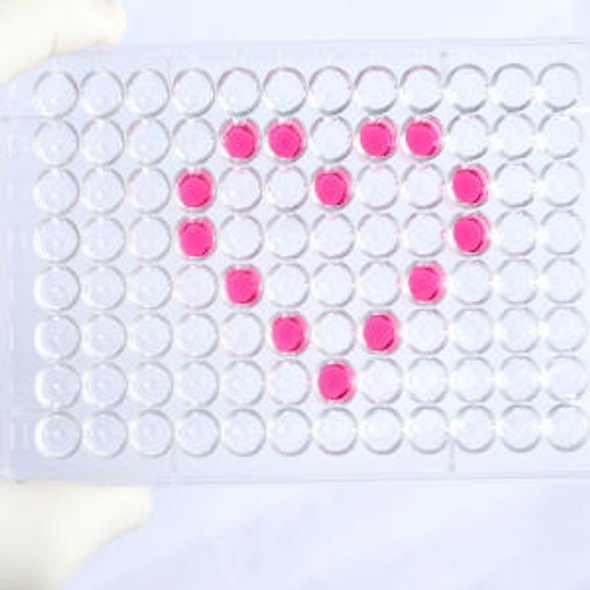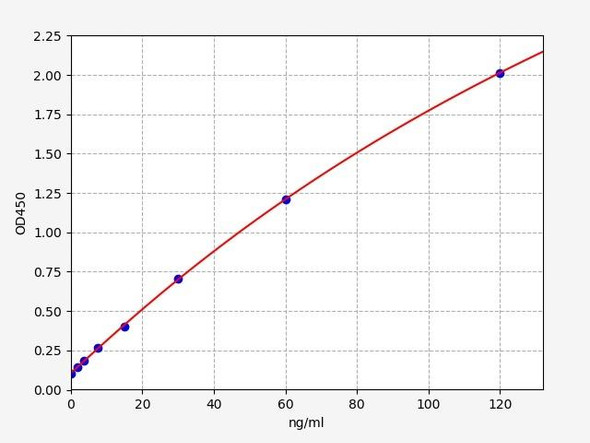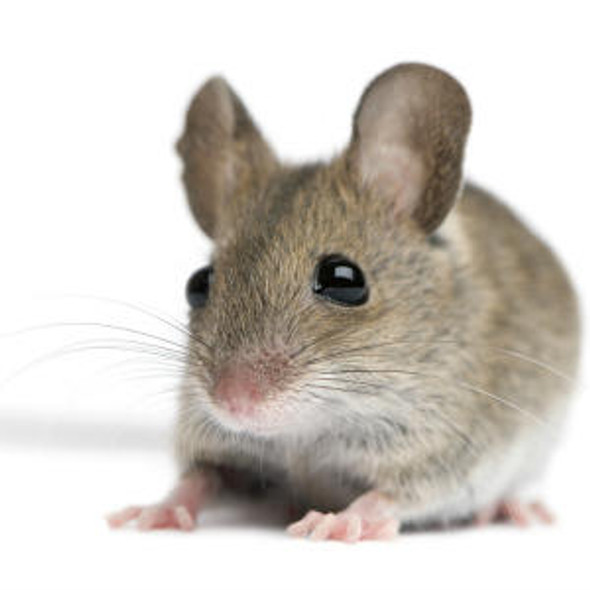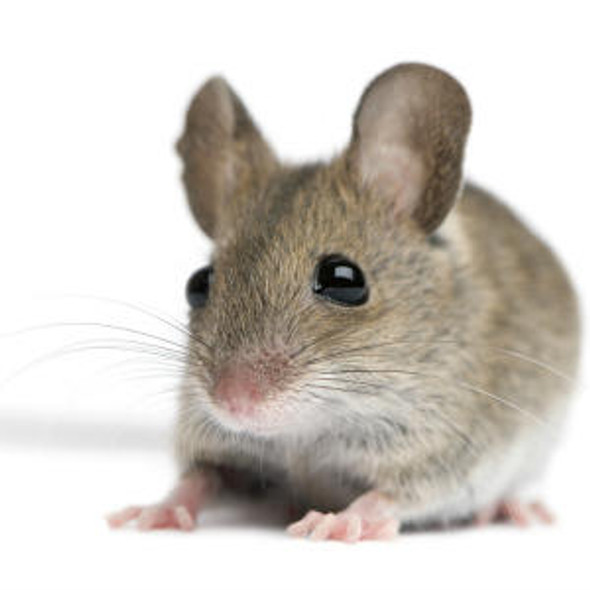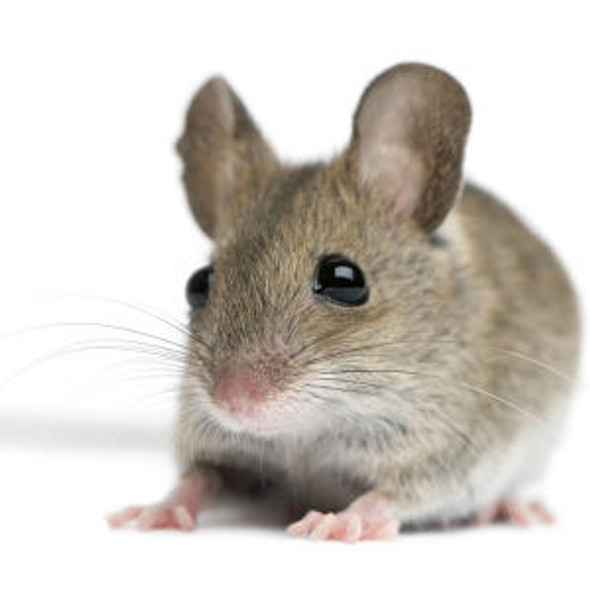Mouse Mast/stem cell growth factor receptor Kit (Kit) ELISA Kit
- SKU:
- MOEB0115
- Product Type:
- ELISA Kit
- Size:
- 96 Assays
- Uniprot:
- P05532
- Range:
- 0.156-10 ng/mL
- ELISA Type:
- Sandwich
- Synonyms:
- SCFR, c-Kit
- Reactivity:
- Mouse
Description
| Product Name: | Mouse Mast/stem cell growth factor receptor Kit (Kit) ELISA Kit |
| Product Code: | MOEB0115 |
| Alias: | Mast/stem cell growth factor receptor Kit, SCFR, Proto-oncogene c-Kit, Tyrosine-protein kinase Kit, Kit, Sl, 2.7.10.1, CD117 |
| Uniprot: | P05532 |
| Reactivity: | Mouse |
| Range: | 0.156-10 ng/mL |
| Detection Method: | Sandwich |
| Size: | 96 Assay |
| Storage: | Please see kit components below for exact storage details |
| Note: | For research use only |
| UniProt Protein Function: | Kit: a receptor tyrosine kinase and a member of the subfamily that includes PDGF, CSF-1 and FLT-3/flk-2 receptors. Receptor for stem cell factor. Plays a critical role in hematopoietic stem cell, mast cell, melanocyte and germ cell development. Ligand binding induces autophosphorylation, dimerization and activation, leading to the recruitment and phosphorylation of downstream SH2-containing signaling components including PLC-gamma, PI3 kinase p85, SHP2 and CrkL, linking c-Kit to various cell signaling pathways. Molecular lesions that impair the kinase activity of c-Kit are associated with a variety of developmental disorders, while mutations that constitutively activate c-Kit can lead to hyperplasia and tumorigenesis. Activating mutations cause >90% of gastrointestinal stromal tumors (GIST); successfully treated with inhibitors Gleevec (imatinib, Glivec) and Sutent (Sutinib, SU11248). Activating mutations also induce mastocytosis. Autocrine/paracrine stimulation may drive some lung and other tumors. Loss of expression associated with melanoma progression. Familial loss of function mutations cause piebaldism, with defects in hair and skin pigmentation due to lack of melanocytes. |
| UniProt Protein Details: | Protein type:Oncoprotein; Protein kinase, tyrosine (receptor); Kinase, protein; Protein kinase, TK; Membrane protein, integral; EC 2.7.10.1; TK group; PDGFR family Cellular Component: acrosome; cell surface; cytoplasm; external side of plasma membrane; extracellular space; intercellular junction; internal side of plasma membrane Molecular Function:cytokine binding; protease binding; protein binding; protein homodimerization activity; protein-tyrosine kinase activity; stem cell factor receptor activity; transmembrane receptor protein tyrosine kinase activity Biological Process: actin cytoskeleton reorganization; activation of MAPK activity; cell differentiation; chemotaxis; cytokine and chemokine mediated signaling pathway; dendritic cell cytokine production; detection of mechanical stimulus involved in sensory perception of sound; embryonic hemopoiesis; epithelial cell proliferation; erythrocyte differentiation; germ cell development; germ cell migration; germ cell programmed cell death; glycosphingolipid metabolic process; gut development; hemopoiesis; immature B cell differentiation; inflammatory response; lamellipodium biogenesis; lymphoid progenitor cell differentiation; mast cell chemotaxis; mast cell cytokine production; mast cell degranulation; melanocyte differentiation; myeloid leukocyte differentiation; myeloid progenitor cell differentiation; negative regulation of programmed cell death; ovarian follicle development; peptidyl-tyrosine phosphorylation; pigmentation; pigmentation during development; positive regulation of cell migration; positive regulation of cell proliferation; positive regulation of JAK-STAT cascade; positive regulation of long-term neuronal synaptic plasticity; positive regulation of MAP kinase activity; positive regulation of MAPKKK cascade; positive regulation of Notch signaling pathway; positive regulation of pseudopodium formation; positive regulation of transcription factor activity; positive regulation of tyrosine phosphorylation of Stat1 protein; positive regulation of tyrosine phosphorylation of Stat3 protein; positive regulation of tyrosine phosphorylation of Stat5 protein; protein amino acid autophosphorylation; protein amino acid phosphorylation; regulation of cell shape; regulation of pigmentation during development; response to radiation; somatic stem cell division; somatic stem cell maintenance; spermatid development; spermatogenesis; stem cell differentiation; T cell differentiation; visual learning |
| NCBI Summary: | The c-Kit proto-oncogene is the cellular homolog of the transforming gene of a feline retrovirus (v-Kit). The c-kit protein includes characteristics of a protein kinase transmembrane receptor. Alternatively spliced transcript variants encoding different isoforms have been found for this gene. [provided by RefSeq, Jul 2008] |
| UniProt Code: | P05532 |
| NCBI GenInfo Identifier: | 353526329 |
| NCBI Gene ID: | 16590 |
| NCBI Accession: | P05532.3 |
| UniProt Secondary Accession: | P05532,Q61415, Q61416, Q61417, Q6LEE9, Q6QJB7, Q6QJB8 Q7TS86, Q8C8K9, |
| UniProt Related Accession: | P05532 |
| Molecular Weight: | 22,814 Da |
| NCBI Full Name: | Mast/stem cell growth factor receptor Kit |
| NCBI Synonym Full Names: | kit oncogene |
| NCBI Official Symbol: | Kit |
| NCBI Official Synonym Symbols: | W; Bs; Fdc; Ssm; SCO1; SCO5; SOW3; CD117; c-KIT; Tr-kit; Gsfsco1; Gsfsco5; Gsfsow3 |
| NCBI Protein Information: | mast/stem cell growth factor receptor Kit |
| UniProt Protein Name: | Mast/stem cell growth factor receptor Kit |
| UniProt Synonym Protein Names: | Proto-oncogene c-Kit; Tyrosine-protein kinase Kit; CD_antigen: CD117 |
| Protein Family: | Kit ligand |
| UniProt Gene Name: | Kit |
| UniProt Entry Name: | KIT_MOUSE |
| Component | Quantity (96 Assays) | Storage |
| ELISA Microplate (Dismountable) | 8×12 strips | -20°C |
| Lyophilized Standard | 2 | -20°C |
| Sample Diluent | 20ml | -20°C |
| Assay Diluent A | 10mL | -20°C |
| Assay Diluent B | 10mL | -20°C |
| Detection Reagent A | 120µL | -20°C |
| Detection Reagent B | 120µL | -20°C |
| Wash Buffer | 30mL | 4°C |
| Substrate | 10mL | 4°C |
| Stop Solution | 10mL | 4°C |
| Plate Sealer | 5 | - |
Other materials and equipment required:
- Microplate reader with 450 nm wavelength filter
- Multichannel Pipette, Pipette, microcentrifuge tubes and disposable pipette tips
- Incubator
- Deionized or distilled water
- Absorbent paper
- Buffer resevoir
*Note: The below protocol is a sample protocol. Protocols are specific to each batch/lot. For the correct instructions please follow the protocol included in your kit.
Allow all reagents to reach room temperature (Please do not dissolve the reagents at 37°C directly). All the reagents should be mixed thoroughly by gently swirling before pipetting. Avoid foaming. Keep appropriate numbers of strips for 1 experiment and remove extra strips from microtiter plate. Removed strips should be resealed and stored at -20°C until the kits expiry date. Prepare all reagents, working standards and samples as directed in the previous sections. Please predict the concentration before assaying. If values for these are not within the range of the standard curve, users must determine the optimal sample dilutions for their experiments. We recommend running all samples in duplicate.
| Step | |
| 1. | Add Sample: Add 100µL of Standard, Blank, or Sample per well. The blank well is added with Sample diluent. Solutions are added to the bottom of micro ELISA plate well, avoid inside wall touching and foaming as possible. Mix it gently. Cover the plate with sealer we provided. Incubate for 120 minutes at 37°C. |
| 2. | Remove the liquid from each well, don't wash. Add 100µL of Detection Reagent A working solution to each well. Cover with the Plate sealer. Gently tap the plate to ensure thorough mixing. Incubate for 1 hour at 37°C. Note: if Detection Reagent A appears cloudy warm to room temperature until solution is uniform. |
| 3. | Aspirate each well and wash, repeating the process three times. Wash by filling each well with Wash Buffer (approximately 400µL) (a squirt bottle, multi-channel pipette,manifold dispenser or automated washer are needed). Complete removal of liquid at each step is essential. After the last wash, completely remove remaining Wash Buffer by aspirating or decanting. Invert the plate and pat it against thick clean absorbent paper. |
| 4. | Add 100µL of Detection Reagent B working solution to each well. Cover with the Plate sealer. Incubate for 60 minutes at 37°C. |
| 5. | Repeat the wash process for five times as conducted in step 3. |
| 6. | Add 90µL of Substrate Solution to each well. Cover with a new Plate sealer and incubate for 10-20 minutes at 37°C. Protect the plate from light. The reaction time can be shortened or extended according to the actual color change, but this should not exceed more than 30 minutes. When apparent gradient appears in standard wells, user should terminatethe reaction. |
| 7. | Add 50µL of Stop Solution to each well. If color change does not appear uniform, gently tap the plate to ensure thorough mixing. |
| 8. | Determine the optical density (OD value) of each well at once, using a micro-plate reader set to 450 nm. User should open the micro-plate reader in advance, preheat the instrument, and set the testing parameters. |
| 9. | After experiment, store all reagents according to the specified storage temperature respectively until their expiry. |
When carrying out an ELISA assay it is important to prepare your samples in order to achieve the best possible results. Below we have a list of procedures for the preparation of samples for different sample types.
| Sample Type | Protocol |
| Serum | If using serum separator tubes, allow samples to clot for 30 minutes at room temperature. Centrifuge for 10 minutes at 1,000x g. Collect the serum fraction and assay promptly or aliquot and store the samples at -80°C. Avoid multiple freeze-thaw cycles. If serum separator tubes are not being used, allow samples to clot overnight at 2-8°C. Centrifuge for 10 minutes at 1,000x g. Remove serum and assay promptly or aliquot and store the samples at -80°C. Avoid multiple freeze-thaw cycles. |
| Plasma | Collect plasma using EDTA or heparin as an anticoagulant. Centrifuge samples at 4°C for 15 mins at 1000 × g within 30 mins of collection. Collect the plasma fraction and assay promptly or aliquot and store the samples at -80°C. Avoid multiple freeze-thaw cycles. Note: Over haemolysed samples are not suitable for use with this kit. |
| Urine & Cerebrospinal Fluid | Collect the urine (mid-stream) in a sterile container, centrifuge for 20 mins at 2000-3000 rpm. Remove supernatant and assay immediately. If any precipitation is detected, repeat the centrifugation step. A similar protocol can be used for cerebrospinal fluid. |
| Cell culture supernatant | Collect the cell culture media by pipette, followed by centrifugation at 4°C for 20 mins at 1500 rpm. Collect the clear supernatant and assay immediately. |
| Cell lysates | Solubilize cells in lysis buffer and allow to sit on ice for 30 minutes. Centrifuge tubes at 14,000 x g for 5 minutes to remove insoluble material. Aliquot the supernatant into a new tube and discard the remaining whole cell extract. Quantify total protein concentration using a total protein assay. Assay immediately or aliquot and store at ≤ -20 °C. |
| Tissue homogenates | The preparation of tissue homogenates will vary depending upon tissue type. Rinse tissue with 1X PBS to remove excess blood & homogenize in 20ml of 1X PBS (including protease inhibitors) and store overnight at ≤ -20°C. Two freeze-thaw cycles are required to break the cell membranes. To further disrupt the cell membranes you can sonicate the samples. Centrifuge homogenates for 5 mins at 5000xg. Remove the supernatant and assay immediately or aliquot and store at -20°C or -80°C. |
| Tissue lysates | Rinse tissue with PBS, cut into 1-2 mm pieces, and homogenize with a tissue homogenizer in PBS. Add an equal volume of RIPA buffer containing protease inhibitors and lyse tissues at room temperature for 30 minutes with gentle agitation. Centrifuge to remove debris. Quantify total protein concentration using a total protein assay. Assay immediately or aliquot and store at ≤ -20 °C. |
| Breast Milk | Collect milk samples and centrifuge at 10,000 x g for 60 min at 4°C. Aliquot the supernatant and assay. For long term use, store samples at -80°C. Minimize freeze/thaw cycles. |




